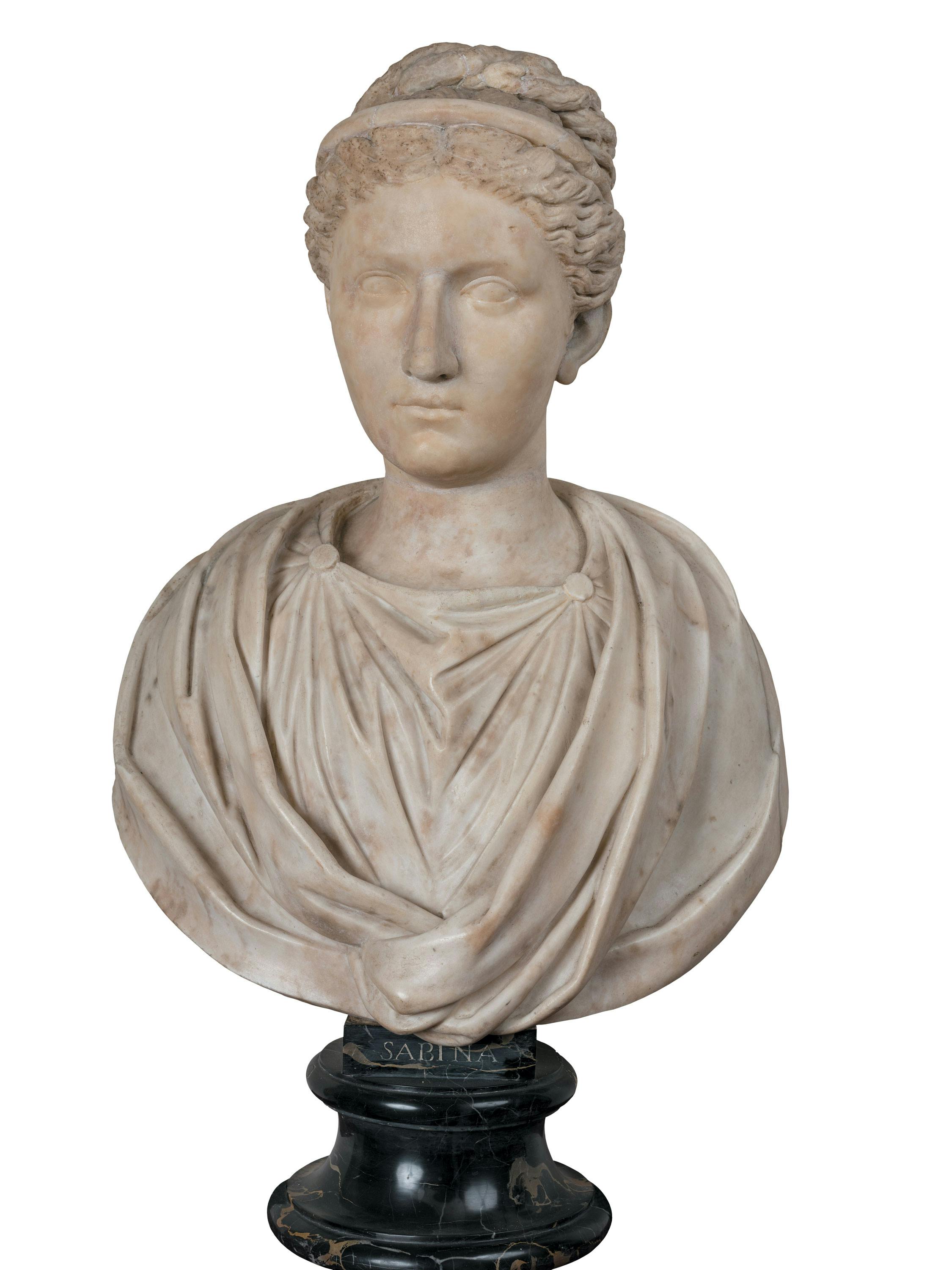Portrait of Vibia Sabina
Roman art
The sculpture depicts Vibia Sabina, wife of the Emperor Hadrian (117-138 AD). The face, with its features idealized to express eternal youth, resembles that of a goddess more than that of a woman. The hair, in an elegant yet simple style, is parted at the center of the forehead, falling into soft wavy locks at the sides, pulled back and held in place by a smooth headband, with a loose curl falling onto the cheekbones. The hair is then gathered at the nape of the neck to form a kind of soft bun at the top. The head sits on an elegant modern, draped bust in Luni marble.
The portrait of Sabina is of the so-called "main type”, created around 130 AD. It is intentionally reminiscent of the way female divinities were depicted in the 4th century BC, especially in the hairstyle, simultaneously giving the empress a solemn, detached aura, but conforming to the political and cultural styles of Hadrian's Principate, of which Sabina, as his Augusta, was one of the icons. Although relegated by historiography to an unquestionably secondary position in the description of her husband's reign, the frequent repetition of Sabina’s public effigy, and this type of portrait, provide evidence of the fundamental role she played in her husband’s official propaganda.
Records show that this work, of unknown origin, has been in the Gallery since 1704, as testified by the Inventory of that year; it was definitely also exhibited temporarily in the Hall of Ancient Inscriptions.
3D model in collaboration with Indiana University.
Visit http://www.digitalsculpture.org/florence/
